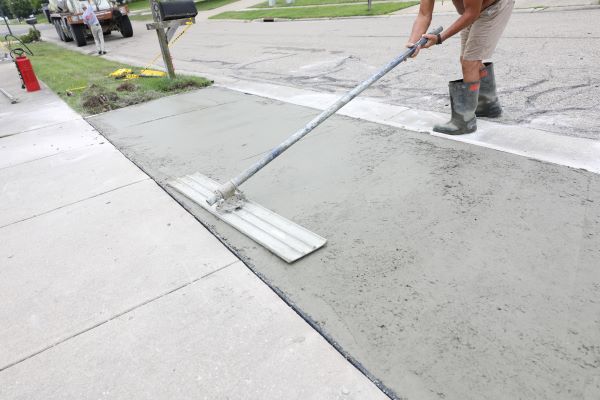
Revitalizing Surfaces: DIY Guide to Repairing Driveways and Sidewalks
Maintaining your property’s curb appeal involves addressing wear and tear on driveways and sidewalks. In this comprehensive guide, we’ll walk you through the steps of repairing driveways and sidewalks yourself, enhancing safety and aesthetics around your home.
Assessing the Damage
Before diving into repairs, assess the extent of the damage on your driveways and sidewalks. Look for cracks, potholes, or uneven surfaces. Understanding the specific issues will guide your DIY repair efforts and help determine the materials needed for the task.
Gathering the Necessary Tools and Materials
Proper tools and materials are essential for effective DIY repairs. Depending on the type of damage, you may need a variety of tools such as a shovel, concrete mix, trowel, sealant, and safety gear. Ensure you have everything on hand before starting the repair process.
Fixing Small Cracks and Surface Damage
For minor cracks and surface damage, consider using a concrete resurfacer or patching compound. Clean the damaged area thoroughly, apply the patching material, and smooth it out with a trowel. This simple DIY fix can rejuvenate the appearance of your driveway and sidewalk.
Addressing Potholes and Depressions
Potholes and depressions require a more involved repair process. Start by removing any loose or broken concrete around the damaged area. Fill the depression with a concrete mix, leveling it with the surrounding surface. Smooth the surface with a trowel and allow it to cure according to the product instructions.
Dealing with Uneven Surfaces
Uneven surfaces pose tripping hazards and affect the overall appearance of your property. Address these issues by grinding down high spots or filling in low areas with a leveling compound. A level and even surface enhance safety and contribute to the visual appeal of your driveway and sidewalks.
Sealing and Protecting the Repaired Areas
Once the repairs are complete, consider applying a concrete sealer to protect the surfaces from future damage. Sealing not only enhances the durability of the repaired areas but also provides a finished look. Choose a sealer suitable for your specific driveway or sidewalk material.
Preventing Future Damage
To extend the life of your repairs, implement preventive measures. Keep driveways and sidewalks clean from debris, and promptly address any issues that arise. Regular maintenance, such as cleaning and applying sealant, can significantly reduce the likelihood of extensive repairs in the future.
Expanding Your DIY Skills
While basic repairs can often be tackled with DIY methods, it’s essential to know your limits. For more complex issues, such as extensive cracks or foundation problems, consulting a professional may be necessary. Expanding your DIY skills gradually and seeking professional help when needed ensures effective and long-lasting repairs.
Enhancing Curb Appeal
A well-maintained driveway and sidewalk contribute significantly to your home’s curb appeal. Beyond repairs, consider landscaping around these areas to complement the overall aesthetics of your property. Well-manicured lawns and strategically placed plants enhance the visual appeal of your home.
Connecting with DIY Resources
For more detailed information on repairing driveways and sidewalks yourself, visit mimimises.org. Explore comprehensive resources to empower you in enhancing safety and aesthetics around your home through effective and budget-friendly DIY repair methods.
In conclusion, DIY repairs for driveways and sidewalks are achievable with the right tools and techniques. By addressing issues promptly and maintaining these surfaces, you not only improve the safety of your property but also contribute to a welcoming and visually appealing outdoor space.
